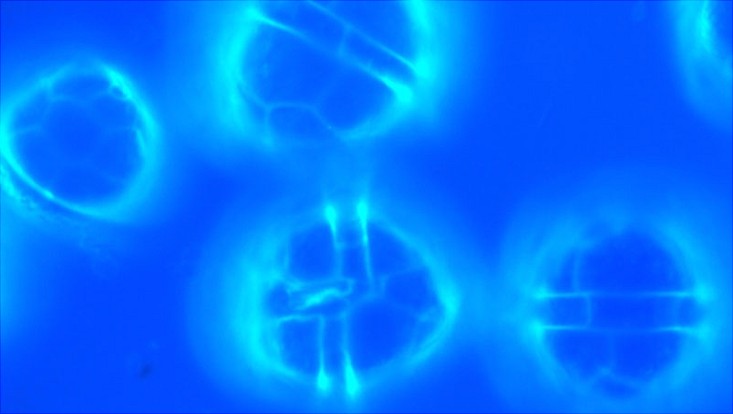Plankton from 1920 – reviving tiny algae from their long slumber
16 November 2017, by Franziska Neigenfind

Photo: UHH/CEN/Hinners
Phytoplankton is simply amazing: despite its small size, it forms the nutritional basis for all marine life and produces half of our planet’s oxygen. Accordingly, we marine biologists are keeping a close eye on how climate change is affecting these small algae. Are they successfully adapting to the higher temperatures? To answer that question, for the first time I revived the ancestors of a plankton species that can survive for years in sediment. What does the comparison with its modern counterparts tell us?

At the Center for Earth System Research and Sustainability, my work involves tiny organisms known as dinoflagellates. My “dinos” came from the seafloor off the coast of Helsinki, and their lives are mostly shaped by temperature. If it gets too warm for their taste, they go into stasis and sink to the ocean floor. Once in the sediment, they can survive for great lengths of time without oxygen. When the sea ice thaws in the spring and the first sunbeams hit the water’s dark surface, they can become active again. Further, springtime storms can stir up the sediment, exposing the sleepers to oxygen and light; as a result, they generate new cells and rise to the surface. Their favorite temperature range is between zero and six degrees Celsius. They consume massive amounts of nutrients, double their mass every three days and, together with other species, form enormous algal blooms.
Yet the time of year when the dinos typically bloom has already shifted: for the past 30 years, it has come roughly ten days earlier – a clearly recognizable change! Does that mean the dinos have adapted to the new conditions? By comparing them with their ancestors, I hoped to find out.
Centenarians floating in my Petri dish
We were able to date the samples from Helsinki with the help of radioactive methods, and found they actually were 100 years old! During that time, the local waters had warmed by roughly 0.8 degrees Celsius, a major change for the algae. In the next step, we gently cleansed the centenarians and kept them in fresh 3-degree-warm water, always with one question in the back of our minds: would they really wake up and create brand-new dinos? And it worked! Suddenly I could see tiny, living creatures from 1920 floating in my Petri dish. Using a micropipette I then removed single cells, one by one, and allowed them to multiply separately. For comparison, I took dinos from today that were in stasis, and subjected them to the same procedure. Then I monitored their behavior at different temperatures for several weeks.
This allowed me to quickly rule out a few factors: the modern dinos didn’t multiply any faster than the old ones; the pace was the same. They also became active at the same water temperatures as they did a century ago, and both groups went into stasis once the temperature reached 14 degrees – meaning their temperature range hadn’t changed. Nor had their size.
Today’s dinos have adapted their life cycle
Yet then I noticed that many of the new algae were much slower to go into stasis. Whereas many of the older dinos did so at between seven and nine degrees, this was true for only a handful of the new ones. That could be a strategy: the water now grows warm earlier in the year. If the dinos followed their old pattern and went into stasis en masse, they wouldn’t have enough time to form algal blooms. But these blooms are vital for their reproductive cycle.
It would seem that today’s dinos have adapted their rhythm to the warmer temperatures. Plus, we’ve learned another valuable lesson: the sediment could hold the answers to further questions on climate-change adaptation.
This content was first published as a guest article in the newspaper Hamburger Abendblatt on 13th November 2017.
Jana Hinners is a marine biologist and expert on phytoplankton at the Center for Earth System Research and Sustainability (CEN).
